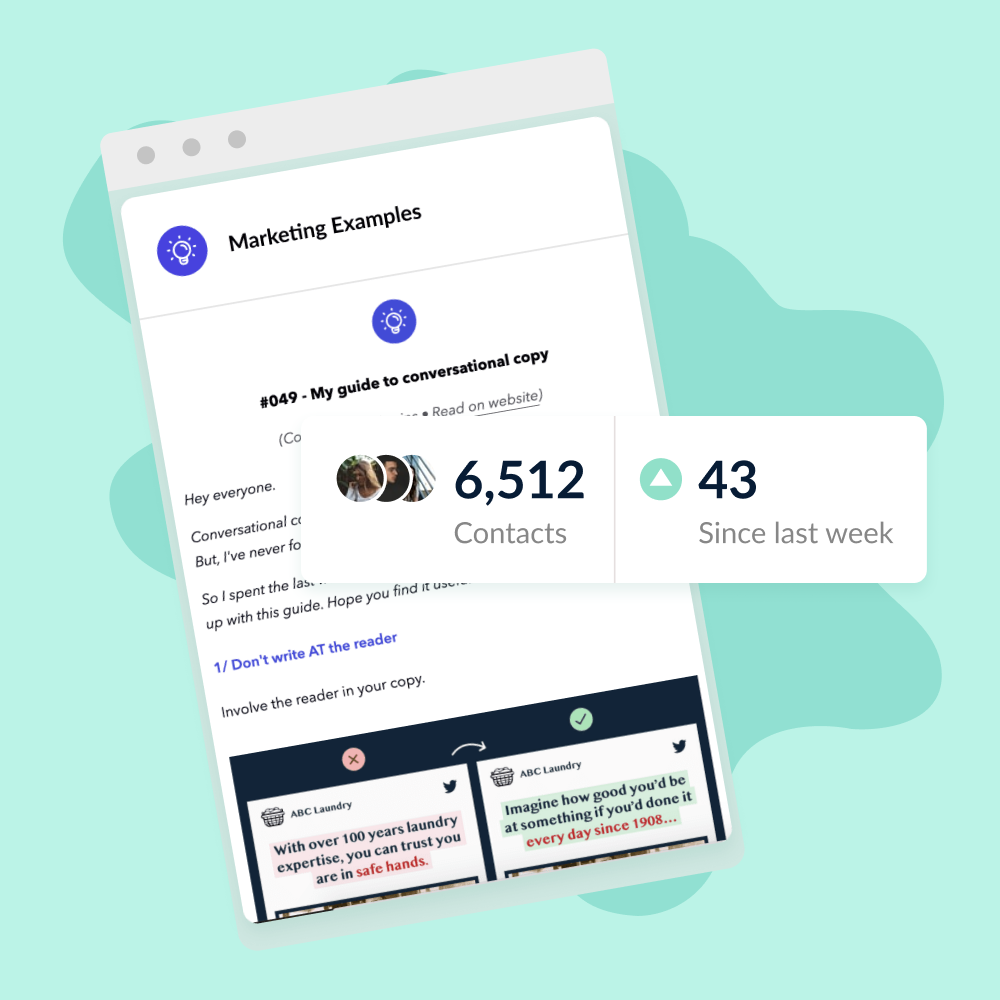Email marketing remains an invaluable tool for both Business to Business (B2B) and Business to Consumer (B2C) companies. Yet, navigating the many email marketing regulations can be a minefield. This guide aims to elucidate and compare the different rules and regulations that impact B2B and B2C email marketing.
Page Contents
The basics of B2B email marketing regulations
In the world of B2B email marketing, the regulations you must follow will depend on the country you’re in. The primary regulations are governed by acts such as CAN-SPAM (if you’re in the US) and GDPR (if you’re in the EU or UK).
Understanding these laws is vital for any business that uses email as a tool for communication and marketing.
CAN-SPAM Act
Originating in the United States, the CAN-SPAM Act sets rules for commercial emails, establishing requirements for commercial messages, and providing recipients with the right to stop receiving them. Its regulations apply to B2B businesses in specific ways, including:
- The prohibition of misleading or false header information.
- A conspicuous unsubscribe mechanism is present in the email.
- Clear identification that the message is an advertisement.
General Data Protection Regulation (GDPR)
GDPR, implemented by the European Union, has a broader reach, affecting any business that interacts with EU citizens. Key GDPR regulations for B2B email marketing include:
- Consent must be freely given, informed, specific, and unambiguous.
- Businesses must protect personal data and uphold the rights of data subjects.
- Data subjects have the right to access and correct their data, as well as the “right to be forgotten”.
🚨 Don’t forget – it’s essential to familiarise yourself with the specific laws and regulations in the countries where your audience resides.
Implied consent in B2B
A critical concept in B2B email marketing is ‘implied consent’. Essentially, if there is an existing business relationship, it might be inferred that email communication is permissible. However, it’s crucial to understand the specific rules of the jurisdictions you are operating in, as they can vary.
The basics of B2C email marketing regulations
B2C email marketing also adheres to regulations like CAN-SPAM and GDPR. However, the rules are often more stringent in comparison to B2B, with a major emphasis on ‘express consent’.
CAN-SPAM Act
The CAN-SPAM Act applies to B2C email marketing similarly to B2B, but with greater emphasis on the rights of individual consumers. Critical requirements include:
- Clear identification that the email is an advertisement.
- Location information of the sender must be present.
- A visible and operational mechanism to unsubscribe from future emails.
General Data Protection Regulation (GDPR)
The GDPR also plays a crucial role in B2C email marketing. Some critical regulations include:
- Explicit consent must be given by consumers to receive marketing emails.
- Consumers have the right to access, correct, and delete their data.
- Personal data must be protected and processed responsibly.
🚨 Don’t forget – it’s essential to familiarise yourself with the specific laws and regulations in the countries where your audience resides.
Express consent in B2C
Within a lot of regulations, express consent is the bedrock of B2C email marketing. Consumers must knowingly opt-in to receive marketing emails, making it crucial for businesses to gain this consent upfront and keep accurate records.
Differences between B2B and B2C email marketing regulations
Consent: implied vs. express
The key distinction between B2B and B2C email marketing regulations often boils down to the type of consent required – implied or express. This difference exists due to the distinct goals and audiences of B2B and B2C marketing. For instance, B2B communications often involve detailed product specifications or partnership proposals, whilst B2C emails typically focus on product promotion or updates for individual customers.
🐙 Consider a situation where a B2B business is sending product updates to existing clients – implied consent may be acceptable here. Conversely, a B2C company targeting potential consumers with a new product launch would require explicit opt-in consent from each recipient.
Rigour of regulations
B2C regulations often tend to be stricter due to the need to protect individual consumers. This contrast in rigour means that businesses must be especially cautious when handling consumer data and securing permissions.
Real-world applications
These differences can significantly impact real-world situations. For example, a B2B business may send product updates to existing clients based on implied consent. However, a B2C company promoting a new product would require explicit opt-in consent from each recipient.
Navigating compliance in both B2B and B2C email marketing
Understanding the regulations
The first step to navigating compliance in both B2B and B2C email marketing is to thoroughly understand the regulations. This understanding includes awareness of acts like CAN-SPAM and GDPR, along with any other local laws that apply to your specific business or location. Staying updated with these regulations and any amendments is also crucial, as rules can often change.
Utilising CRM tools
A robust Customer Relationship Management (CRM) system can significantly assist in compliance management. These tools can track and manage customer data, consent, and interactions, helping you meet the requirements of different regulations. Many CRM systems offer features that ensure compliance, like opt-in forms, unsubscribe links, and data privacy mechanisms.
Tailoring to jurisdictions
Depending on your audience’s location, different rules might apply. For instance, the rules about implied and express consent may differ significantly between countries. Therefore, it’s necessary to understand the specific regulations of the jurisdictions you operate in or target.
Regular audits and compliance checks
Regularly reviewing and auditing your email marketing practices is vital. These audits can include checking that unsubscribe links work, verifying that consent is properly documented, and ensuring data protection methods are in place and effective. This approach will help identify and rectify any potential non-compliance issues promptly.
Training and awareness
All members of your organisation who are involved in email marketing should be trained on the relevant regulations. This training should include what these regulations entail, why they are necessary, and how to ensure compliance.
Managing non-compliance
Despite the best intentions, there may be times when non-compliance issues arise. In these instances, it’s important to respond quickly and effectively. This response can include investigating the issue, rectifying any errors, notifying relevant regulatory bodies if required, and communicating transparently with your audience.
💡 For more information, check out this marketing compliance checklist.
Conclusion
Understanding the nuances between B2B and B2C email marketing regulations is crucial for all businesses. A firm grasp of these differences will not only protect your company from potential legal pitfalls but also ensure a robust and ethical marketing approach.
As a parting thought, we encourage all businesses to review their email marketing practices in light of this discussion, ensuring that their strategies are on the right side of the law.
Frequently asked questions
What is the primary difference between B2B and B2C email marketing regulations?
The primary difference often boils down to the type of consent required. B2B marketing typically operates on ‘implied consent’, assuming that a pre-existing business relationship gives permission for email communication. On the other hand, B2C marketing relies on ‘express consent’, where consumers must explicitly opt-in to receive marketing emails.
How does the CAN-SPAM Act affect my B2B and B2C email marketing?
The CAN-SPAM Act sets the rules for commercial emails. It requires a clear identification that the message is an advertisement, the inclusion of the sender’s physical postal address, and a visible and operable unsubscribe mechanism. Misleading header and subject lines are strictly prohibited. These rules apply to both B2B and B2C email marketing.
How does GDPR affect my email marketing?
If you’re dealing with EU citizens, regardless of where your company is based, you need to comply with GDPR. This regulation requires businesses to protect personal data, provide mechanisms for individuals to control their data (such as access, rectification, and deletion rights), and obtain clear and specific consent before sending marketing emails.
What happens if I don’t comply with these regulations?
Non-compliance with email marketing regulations can lead to severe consequences, including hefty non-compliance fines, legal action, and damage to your business’s reputation.
How can I ensure I am compliant with both B2B and B2C email marketing regulations?
To ensure compliance, you should understand the regulations fully, utilise CRM tools, tailor your approach to specific jurisdictions, conduct regular audits, provide adequate training for your staff, and have a plan in place for managing any non-compliance issues.
What if I have a mixed audience of both businesses and consumers?
If you have a mixed audience, it’s safer to follow the stricter B2C regulations to ensure you are compliant across the board. This approach typically means obtaining express consent before sending marketing emails.
Are these regulations the same globally?
No, email marketing regulations can vary greatly by country and region. This FAQ covers the primary regulations like CAN-SPAM and GDPR that have widespread international implications. However, it’s essential to familiarise yourself with the specific laws and regulations in the countries where your audience resides.
How often should I review my email marketing practices for compliance?
It’s a good idea to regularly review your email marketing practices for compliance – at least annually, although more frequently can be beneficial. You should also review practices whenever a significant change occurs in your business, your customer base, or in the regulations themselves.
What should I do if I discover a non-compliance issue in my email marketing?
If you discover a non-compliance issue, it’s important to act swiftly. Identify the extent of the issue, take corrective action, and if necessary, inform the relevant regulatory body. You should also communicate with your email subscribers about the issue if their data was potentially affected.


No Comments
Leave a comment Cancel